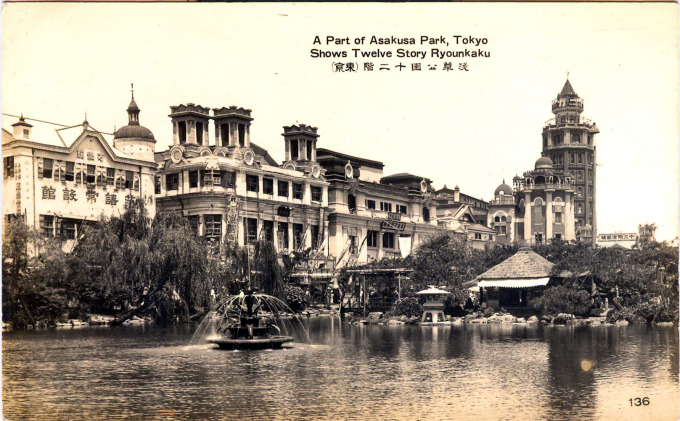
Theater Street (Asakusa Rokku), Tokyo, c. 1920, loooking across the Gourd Pond of Asakusa Park at Ryounkaku (Twelve-Storeys Tower).
See also:
Hanayashika, Asakusa Park, c. 1920
Ryounkaku (Twelve-Storeys), Asakusa
“… Kyoto, with its shrines and handicrafts, is like grandmother’s china cabinet; Asakusa is crazy Aunt Mae’s steamer chest. It’s been around a bit and is full of surprises, laughs and stories that’ll put colour in your cheeks.”
– Riding the Funky Duck in Asakusa, The Globe and Mail, 2005
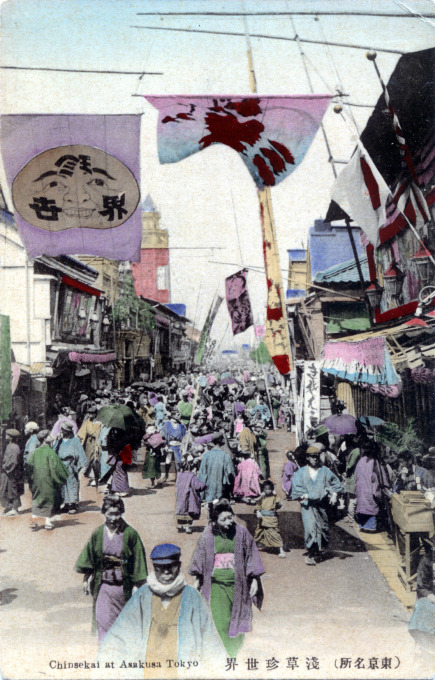
“Chinsekai [“extraordinary world”] at Asakusa”, Tokyo, c. 1910. Advertising banners flutter over “theater street” in the Rokku entertainment district of Asakusa. In the distance can be seen Japan’s first “skyscraper”, Ryounkaku (aka the “Twelve Storeys Tower”).
Asakusa Rokku derived its nickname from its location as the sixth district (rokku) within Asakusa Ward. It has had a long, colorful history of catering to the whims and fancies of Tokyo pleasure-seekers.
Edo’s Kabuki theater troupes, declared degenerate and subversive by puritanic Tokugawa authorities, were banished in 1841 to the then-hinderland of the Asakusa farm fields located outside the city limits. The move did not so much as remove the problem as it did concentrate “subversiveness” all in one place. Meiji Era officials were less prudish. Kabuki was returned to respectability, and returned to within the city limits, after the Restoration. But Asakusa remained home to the outre of Japanese entertainment.
Rokku continued to host a bawdy mix of working-class pleasures. It was the equivalent of Broadway, off-Broadway, North Beach and Times Square all rolled into one … and much more so. Storytellers, jugglers and dancing girl magicians, vaudeville and dance halls, yose performances, “lantern” shows, movie houses, Shinpa and Shingeki theatre, opera, restaurants to suit all tastes, and, of course, unlicensed prostitution. For a hundred years, until wartime firebombing in 1945 laid waste to the area, Rokku – “Theater Street” – was Tokyo’s cultural lodestar.
“‘Asakusa people are old-fashioned,’ wrote novelist Kawabata Yasunari in the early part of our own century. ‘They look after others and others look after them, they care for others and have a sense of duty, all of them, the dealers and hawkers at the top to the tramps and beggars at the bottom … the toughs in Shibuya and Shinjuku are a new sort than the ones we have here. They don’t have tradition but Asakusa does.'”
– Tokyo, Kyoto & Ancient Nara, Richard Lloyd Parry, 1999
Asakusa’s Denkikan [electric building] would, in 1903, become the first hall in Japan to show movies on a full-time basis. For many years, the Asakusa movie theaters had to show their fare, by law, with the house lights up. Theater seating was segregated between men and women and all the usherettes were required to wear underwear beneath their kimono! The cinema houses and theatres gave way to cabarets and dance revues after the 1923 earthquake; those in turn were replaced with strip shows and topless dancing in the years following WWII.
Views of Theater Street, c. 1910-1950
- Theater Street (Rokku), and a glimpse of Ryounkaku (Twelve-Storeys Tower), c. 1910.
- Theater Street (Rokku), c. 1915.
- Theater Street, c. 1920, from across the Gourd Pond at Asakusa Park.
- Elevated view of Theater Street (Rokku), c. 1920.
- Theater Street (Rokku), c. 1920.
- Advertising postcard for Nikkatsu Studio’s “all-talkie” motion picture, “Tokyo Festival” [Tokyo-Matsuri, 東京祭], 1933.
- Asakusa Theater Street, c. 1920.
- Theater Street (Rokku), Ryounkaku (Twelve-Storeys Tower), and Asakusa Park, c. 1920.
- Wide view of Theater Street (Rokku) from Asakusa Park, c. 1920.
- A Part of “Pleasure Land” at Asakusa Park, c. 1920.
- Asakusa “Rokku” at night, c. 1930.
- Asakusa Theater Street, c. 1930.
- Theater Street (Rokku), c. 1940.
- Asakusa Theater Street, c. 1940.
- Theater Street (Rokku), c. 1950.


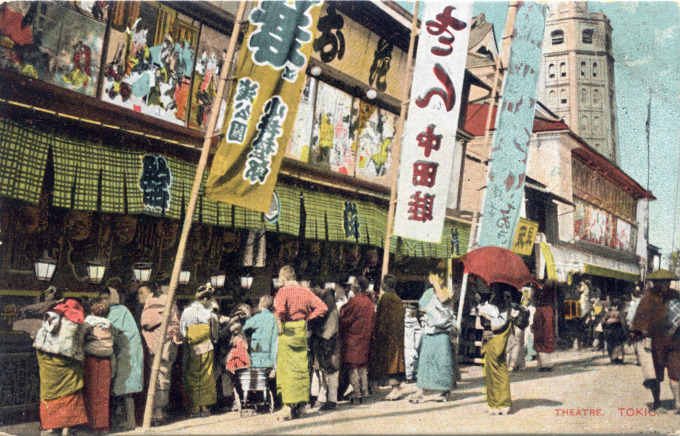
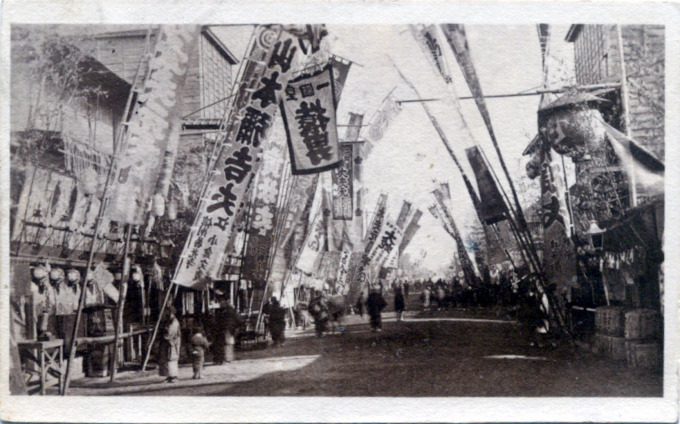
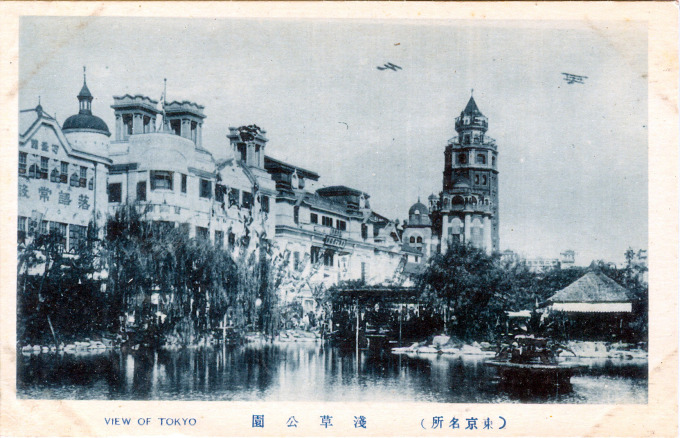
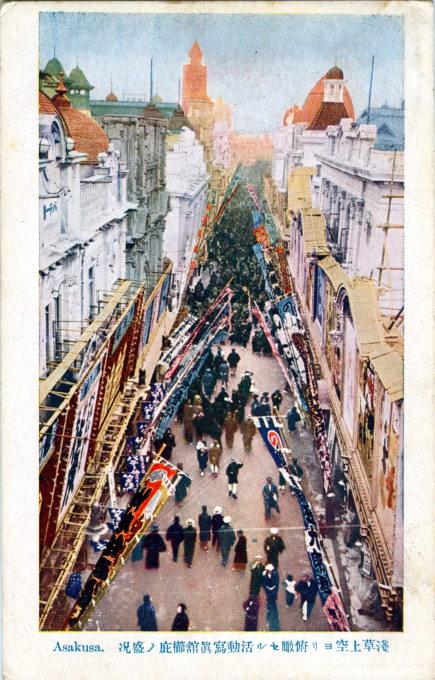
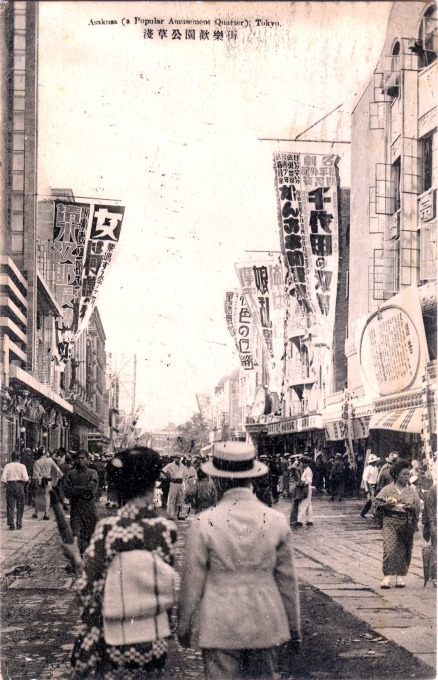
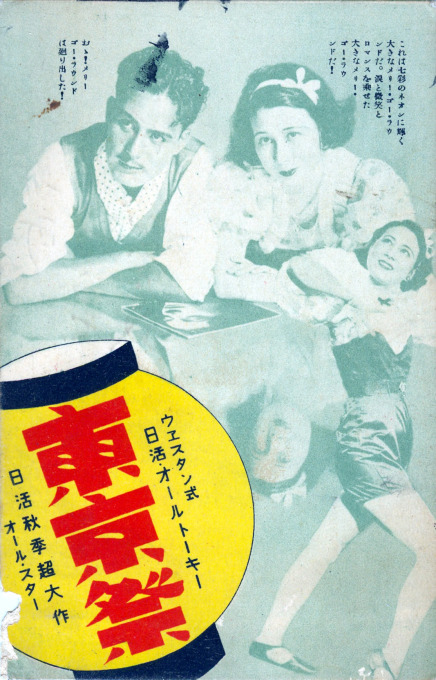
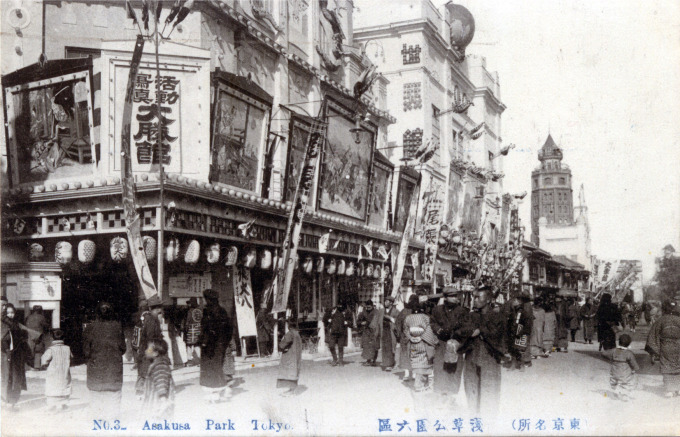
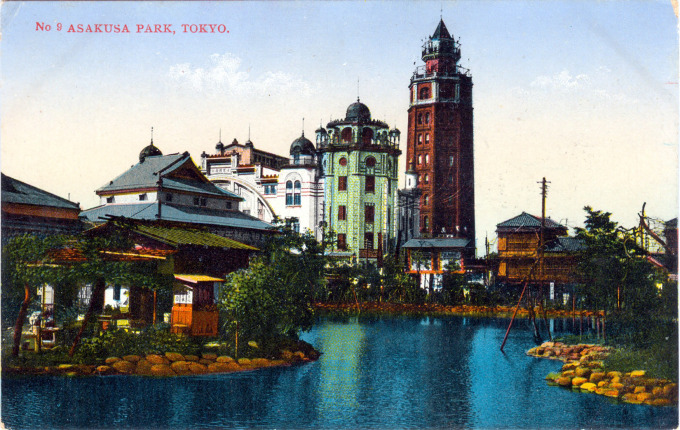
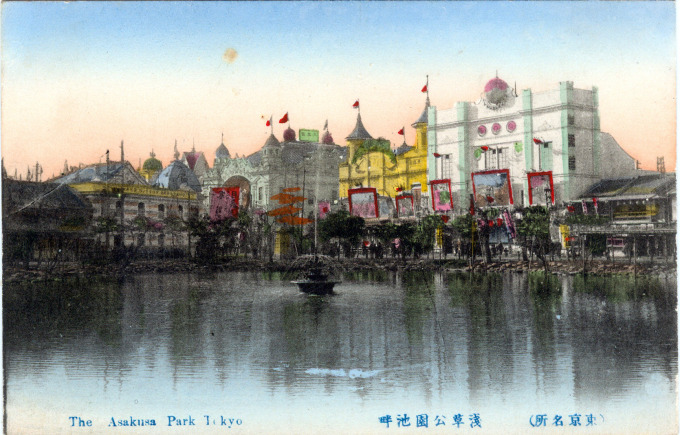
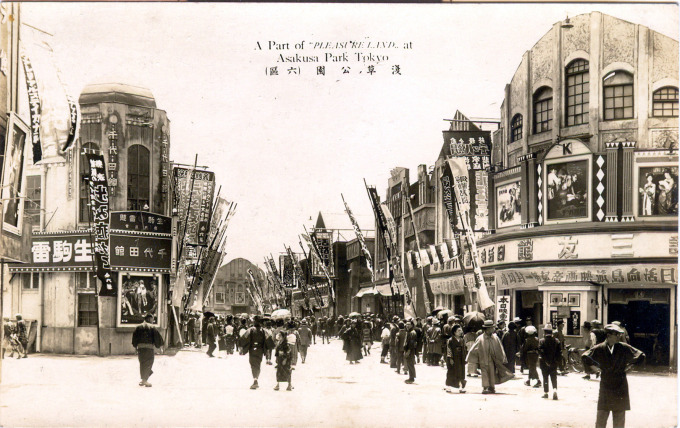
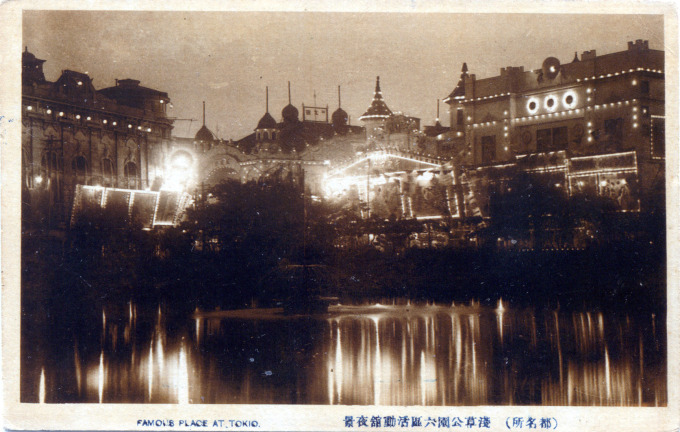
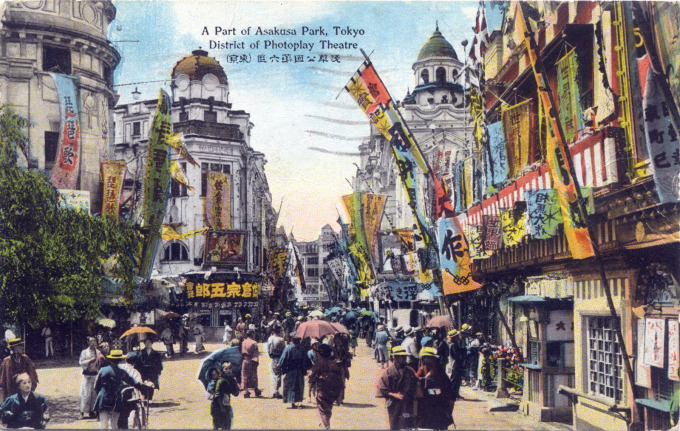
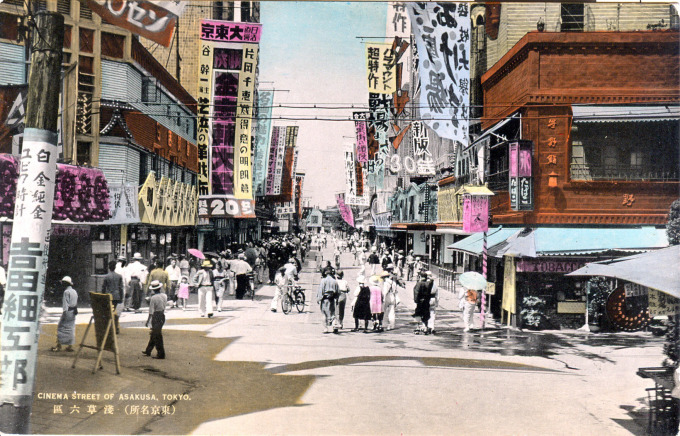
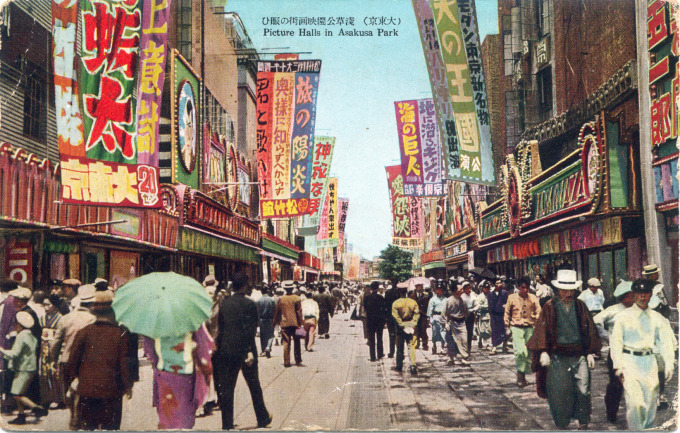
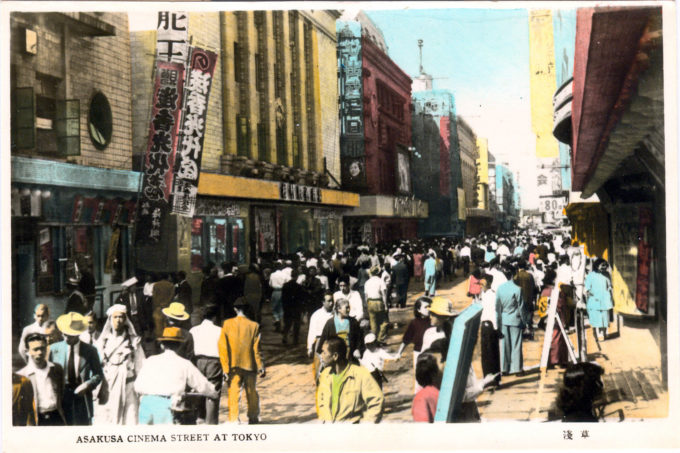
Pingback: Asakusa Park, c. 1910. | Old Tokyo
Pingback: Hanayashiki, Asakusa Park, c. 1920. | Old Tokyo
Pingback: Asakusa Rokku (Theater Street), c. 1930. | Old Tokyo
Pingback: A Part of “Pleasure Land” at Asakusa Park, c. 1920. | Old Tokyo
Pingback: Panoramic view of Asakusa, c. 1910. | Old TokyoOld Tokyo
Pingback: Japanese master swordsman Hibino “Raifu” Masayoshi, c. 1910. | Old TokyoOld Tokyo